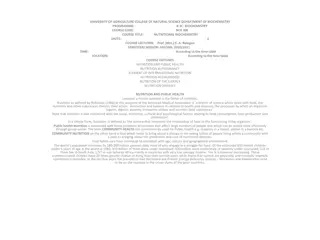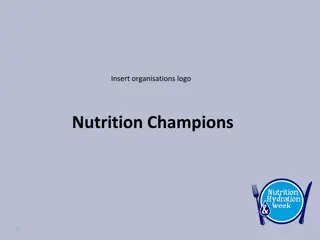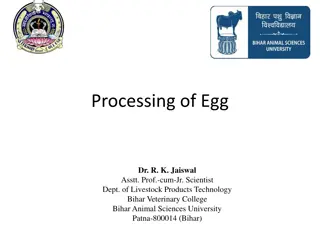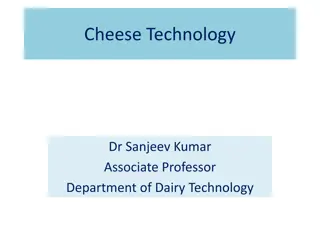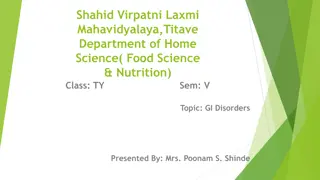Egg Facts and Nutritional Benefits
Hen takes 24-26 hours to produce an egg, yolks contain vitamin D, and yolk color depends on diet. Eggs are rich in fat, protein, vitamins, and minerals. They serve various functions in cooking and come in different grades like USDA Grade AA and A. Proper storage and cooking techniques are crucial for the best egg experience.
Download Presentation

Please find below an Image/Link to download the presentation.
The content on the website is provided AS IS for your information and personal use only. It may not be sold, licensed, or shared on other websites without obtaining consent from the author. Download presentation by click this link. If you encounter any issues during the download, it is possible that the publisher has removed the file from their server.
E N D
Presentation Transcript
Facts- A hen requires 24 A hen requires 24- -26 hours to produce an egg. Thirty 26 hours to produce an egg. Thirty minutes later she starts all over again. minutes later she starts all over again. If an egg is accidentally dropped on the floor, sprinkle If an egg is accidentally dropped on the floor, sprinkle it heavily with salt for easy clean up. it heavily with salt for easy clean up. Egg yolks are one of the few foods that naturally Egg yolks are one of the few foods that naturally contain vitamin D. contain vitamin D. Yolk color depends on the diet of the hen. Natural Yolk color depends on the diet of the hen. Natural yellow yellow- -orange orange
Important things to remember when cooking eggs: 1. 1. Low temperature Low temperature 2. 2. Cook until desired firmness Cook until desired firmness
COMPOSITION & NUTRITIONAL VALUE 1. One medium egg contains between 4 1. One medium egg contains between 4- -5 grams of fat 2. High cholesterol 2. High cholesterol ~200 mg/egg ~200 mg/egg 3. High in Complete Protein 3. High in Complete Protein 4. High in vitamins & minerals 4. High in vitamins & minerals Vitamins ADEK, some B vitamins, zinc, iron, copper Vitamins ADEK, some B vitamins, zinc, iron, copper 5 grams of fat
EGG FUNCTIONS 1. Flavor, color, nutrition 2. Emulsifying agent 3. Aids in thickening/structure 4. Binding/coating agent 5. Leavening agent
Purchasing Eggs Grading Grading The best The best- -quality eggs are graded USDA quality eggs are graded USDA Grade AA, followed by USDA Grade A. Grade AA, followed by USDA Grade A. The grades sold at supermarkets. The grades sold at supermarkets. USDA Grade B, the lowest grade. USDA Grade B, the lowest grade. Available to food service establishments and Available to food service establishments and not sold directly to consumers. not sold directly to consumers.
Differences between grades of eggs White/yolk White/yolk shell shell Use in recipe Use in recipe thick thick perfect perfect Fried, poached Fried, poached Grade AA/A Grade AA/A thin thin Pale in color Pale in color Baking Baking Grade B/C Grade B/C
CHARACTERISTICS OF FRESH/HIGH QUALITY EGGS Yolk is high & firm above the white Small yolk diameter Yolk is centered in white High ratio of thick to thin white High standing thick white
PREPARATION OF EGGS ANd9GcRa_6Y7c-Zcio8y4bTvx3GAJ7WUc8W_DKYA0oZn0nucwhz6QZTKA62rIg Dry Heat Fried Scrambled omelets Moist heat Boiled eggs prepared in a cup Poached eggs A variety of custards ANd9GcS93XrDZzzrC6k7VEmrItcCTCUKN94xcF7tgglH6j240mX-Z8Vxbba6lGw
What is responsible for the dark ring around the cooked egg yolks? ANd9GcQJDtBfGfOyrZ4xyL1gU1-J3Of0Q62JpWJePgdQXhmMjuOdfUMh0DzBaTk ANd9GcT_No7eWmJMP7uERAaNBD7d7iotTZcIAWO4-brzU-wVqmSbZPxikwJWQn9n
Stages of beaten egg whites ANd9GcTUClNOPiOF11R9830-dsEHH4XvsaPio02GzRQLnnMrDgv8_SDUHsychA ANd9GcTKGlwuIBF_gp52NC8pD6NiyTa95076GB1R4QHjCDDFm0tLx19g-nrHRg0 ANd9GcRHCSJFlLsgqRVjeTVrR105FUryEkkwy6XldK8tclGfJTAMIZKpuEY7CuWV
Inspection The Egg Products Inspection Act of 1970 requires The Egg Products Inspection Act of 1970 requires that egg processing plants be inspected and that that egg processing plants be inspected and that their eggs and egg products be: their eggs and egg products be: Wholesome Wholesome Unadulterated Unadulterated Truthfully labeled Truthfully labeled This law is enforced by the USDA Poultry This law is enforced by the USDA Poultry Division and applies to all eggs, whether imported Division and applies to all eggs, whether imported or shipped intra or shipped intra- - or interstate. or interstate.
EGG SAFETY TIPS 1. Inspect before buying and discard any 1. Inspect before buying and discard any broken eggs broken eggs 2. Refrigerate immediately at or below 40 F 2. Refrigerate immediately at or below 40 F 3. Keep in cartons 3. Keep in cartons 4. Cook until the whites are coagulated & yolks 4. Cook until the whites are coagulated & yolks begin to thicken to kill the salmonella begin to thicken to kill the salmonella bacteria bacteria 5. Egg dishes should not be kept out >1hour 5. Egg dishes should not be kept out >1hour





